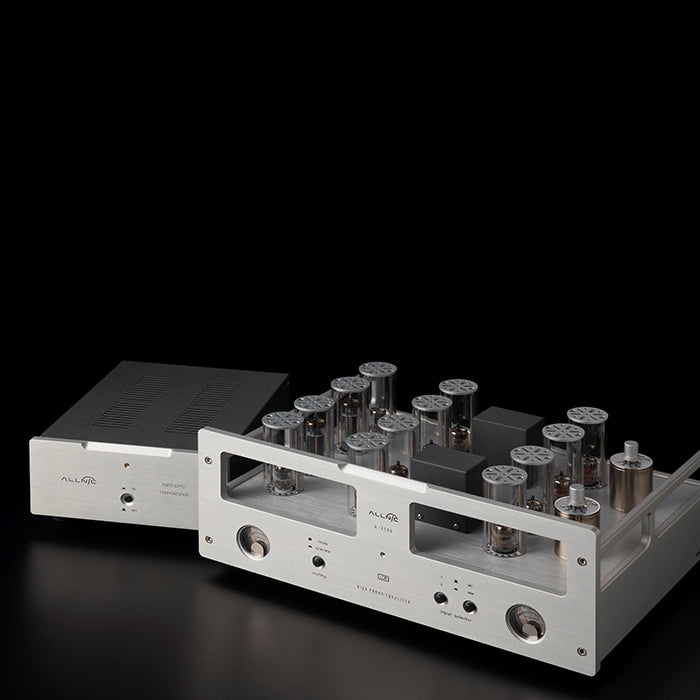The H-6500 is basically a vacuum tube phono amplifier with 2 sets of MM and 2 sets of MC inputs, RIAA curve correction through an LCR filter, and a separate power supply unit in a separate chassis. MC boosting is done through a built-in permalloy core step-up transformer with 4 winding ratios, and MM amplification is done through 5842 triodes inserted 4 per channel. MM voltage gain is 40dB, MC voltage gain is 62dB, 66dB, 68dB, 72dB.
on the front, a current meter to check the status of each channel vacuum tube and mute selection button, MM/MC and 1/2 group input selection buttons are provided. On the rear, from the left, 2 sets of MM inputs (RCA), 2 sets of MC inputs (RCA), 1 set of outputs (RCA), a power supply connection terminal, and two MM/MC ground terminals are provided. The size (WHD) of the main body is 430 × 170 × 335 mm, the power part is 170 × 118 × 275 mm, and the weight of the main body is 9 kg and the power part is 7.5 kg.
the biggest signature of the H-6500 as a phono amplifier is the RIAA curve equalization with an error range of ±0.3dB through the LCR (coil-capacitor-resistance) filter. Because the LCR filter has good dynamics and low-pass response as its impedance is only 600Ω compared to the negative feedback filter or CR filter. However, it is hard to make, such as impedance matching, and the manufacturing cost is high, so it is difficult to access in most phono amplifiers.
The separation of the power supply is also the characteristic. Because the phono amplifier amplifies the very weak signal transmitted from the cartridge, it is vulnerable to electromagnetic noise (EMI). Using 5AR4 in the rectifier stage, 7233 (voltage regulator) and 5654 (voltage error detector) vacuum tubes in the constant voltage circuit is also point. In particular, if a vacuum tube is used instead of a transistor in a constant voltage circuit, the dynamic range is widened and the S/N ratio is improved.
The triode 5842, which is responsible for amplification with four inputs per channel, has a voltage amplification rate of 43, a current amplification rate of 25mA/V, and a plate loss of 4.5W when 200V (B voltage) is applied. For reference, the H-7000V uses two pentode E810Fs connected in three wires per channel.
To the right of these vacuum tubes, one MC step-up transformer was placed for each channel. Four winding ratios (40x, 26x, 20x, 13x) and corresponding amplification factors (32dB, 28dB, 26dB, 22dB) are displayed around the knob. Choosing the turns ratio also determines the load impedance for the MC cartridge. It uses the formula of ‘47㏀/(turns ratio×turns ratio)’, which are 29Ω (40 times), 69Ω (26 times), 117Ω (20 times), and 278Ω (13 times). The MM load impedance was fixed at 47 kΩ.














